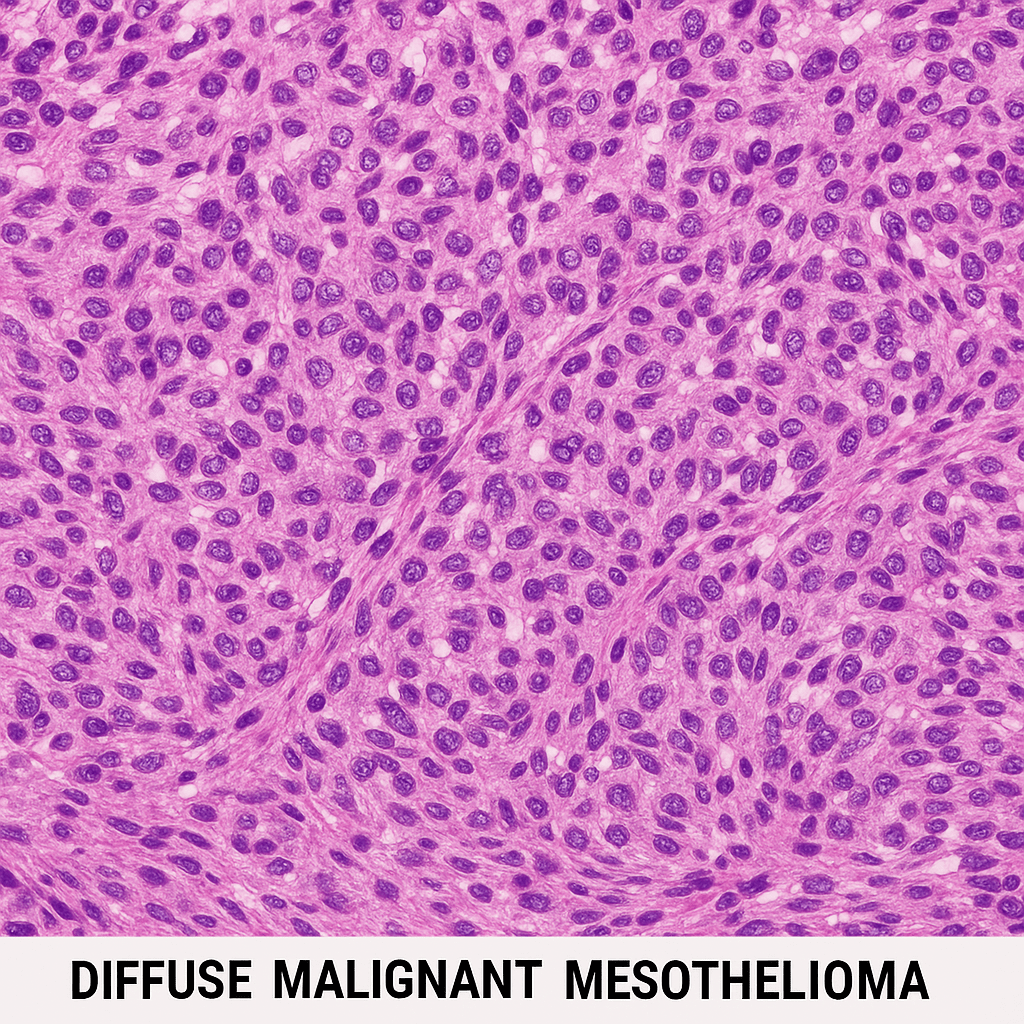Diffuse Malignant Mesothelioma is a rare, aggressive, and invariably fatal form of cancer that arises from the uncontrolled proliferation of mesothelial cells lining the serous cavities of the body—primarily the pleura (lungs), peritoneum (abdomen), pericardium (heart), and tunica vaginalis (testes). This neoplasm is characterized by diffuse, invasive growth across the affected membrane rather than forming a discrete tumor mass, which contributes to its late diagnosis and poor prognosis.
Etiologically linked to asbestos exposure, diffuse malignant mesothelioma typically manifests decades after initial contact with airborne asbestos fibers. Once inhaled or ingested, these fibers embed in mesothelial tissue, triggering chronic inflammation, genetic damage, and ultimately oncogenesis.
Clinically, it presents with non-specific symptoms such as chest or abdominal pain, pleural effusion, dyspnea, weight loss, and fatigue. Diagnosis is confirmed through imaging, histopathology, and immunohistochemistry. Histological subtypes include epithelioid, sarcomatoid, and biphasic, each with differing prognostic implications.
Despite advances in multimodal treatments—including surgery (e.g., extrapleural pneumonectomy), chemotherapy (e.g., cisplatin and pemetrexed), radiation therapy, and immunotherapy—median survival remains between 6 to 18 months from diagnosis.
Diffuse malignant mesothelioma is indexed under ICD-10 code C45 and is reportable to cancer registries worldwide. It is a focus of global health concern due to its latency, occupational hazards, and limited treatment success.
